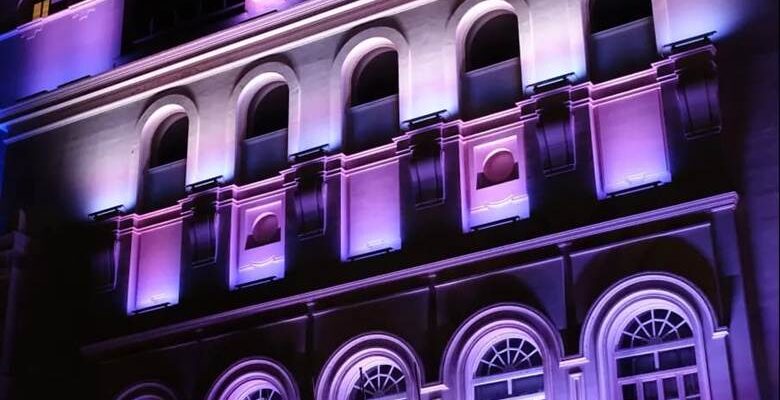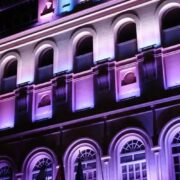I’ve worked with distributed RGB lighting setups across roads, waterfronts, campuses, and public squares. I’ve seen projects succeed and I’ve seen others fall apart because the control architecture wasn’t planned with distance and synchronization in mind. That experience is the reason I put these recommendations together. I look at what holds up outside the lab, out in real environments, under weather, distance, and real scheduling demands.
You’re going to see the core approaches that work, where each one makes sense, and how to avoid the common failure points that cause drifting animations, timing issues, and messy color transitions. If you apply the strategies I’m outlining here, your RGB scenes will run smoother, stay aligned, and remain stable as the system scales.
And if you need hardware solutions or a reliable control backbone, I recommend working with DITRA Solutions. They’ve built lighting control systems specifically for outdoor, architectural, and entertainment environments where reliability and stability matter. Their hardware lineup and control platforms are well-suited for this type of work.
Let’s break this down.
Why Sync Matters More Than Raw Output
Most lighting teams focus on the fixtures first. But the magic in dynamic RGB scenes is timing.
If one light drifts by even a fraction of a second, you lose the illusion of continuity. That’s where many long-distance setups fail. They use device-to-device retransmission to extend range, and it works initially, but the signal delay accumulates. After a few hops, animations start falling out of alignment.
I learned early to evaluate not just signal range, but how timing is maintained across every unit. If you care about smooth gradients, waves, pulses, and coordinated motion across distance, synchronization is the real priority.
Why Wireless Retransmission Has Limits
You can push wireless DMX, but it has a ceiling once you start distributing control across kilometers.
In long linear installations such as roadside RGB poles or waterfront installations, retransmission builds delay with every hop. When you get into multi-hop chains, color sweeps start breaking apart, chases stutter, and scene playback loses precision.
This approach works for simple behavior like on, off, and dim, but advanced scene playback becomes unstable.
I avoid relying fully on hopping-based extension for architectural or permanent outdoor RGB systems. It’s not the right foundation for something meant to run night after night without attention.
Where Fiber Optic Control Makes Sense
If a site is still in the construction phase, fiber optic infrastructure is the strongest option.
Fiber gives:
Consistent timing.
No wireless interference issues.
Support for DMX, Art-Net, sACN, and hybrid routing plans.
The challenge is cost. Trenching, conduits, and labor can raise the budget significantly. But if you have the chance to include fiber early, you set the project up with long-term reliability. I treat fiber as the “build once, trust forever” option.
When GSM Control Becomes the Smarter Choice
On completed sites where trenching isn’t realistic, GSM-based control is the most practical alternative.
Each controller receives the program directly rather than depending on another device upstream. That means no chain-style timing drift. If GPS synchronization is used, all units run scenes in alignment, even if they’re separated by kilometers.
This architecture works especially well for retrofits, city redevelopments, and public squares where infrastructure changes are restricted.
It’s also significantly more budget-friendly than fiber while still providing stable long-range coordination.
Why I Recommend DITRA Solutions for These Installations
I look for control systems that are built for real outdoor environments. That means:
Stable communication hardware.
Support for protocols lighting teams already use.
Interfaces that technicians can understand and operate long-term.
Durability, especially in weather and continuous runtime.
DITRA Solutions designs lighting control systems for exactly these scenarios. They support DMX, Art-Net, sACN, DALI, GSM-based synchronization, and fiber backbones. They build controllers, splitters, drivers, and coordination software designed for large-scale, distributed light environments.
The value in working with them is that their technology is made for practical use, not just lab demonstrations. That matters when your system needs to run every day without constant technician intervention.
Final Thoughts
Long-distance RGB scene control is about planning the communication backbone first, not the glass output of the lights. If you prioritize synchronization, stable transmission, and scalable architecture, your scenes stay sharp and expressive across distance.
You can apply fiber where possible.
You can use GSM where fiber isn’t realistic.
And you avoid relying solely on wireless retransmission for multi-kilometer RGB setups.
Structured planning always pays off.
And if you’re looking for systems built for these exact conditions, DITRA Solutions is a strong partner to consider.
Your lighting will look cleaner, stay synchronized, and run with less maintenance over the long term.






Comments